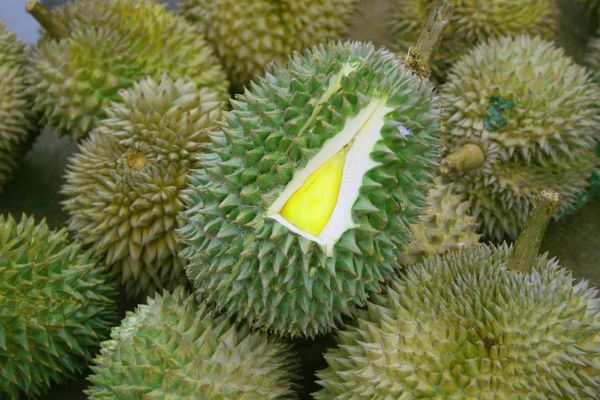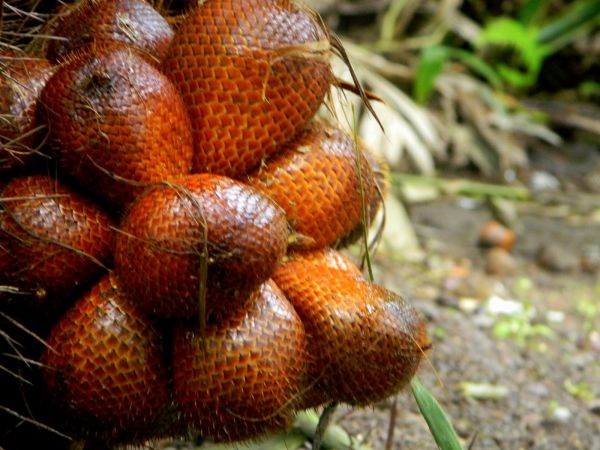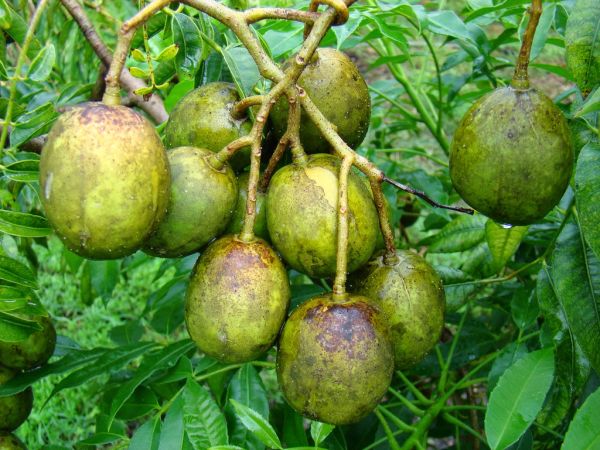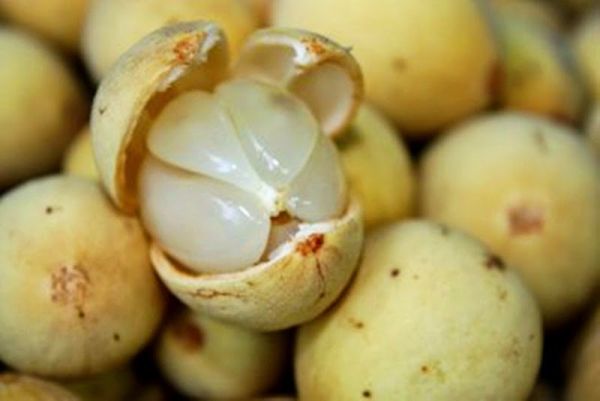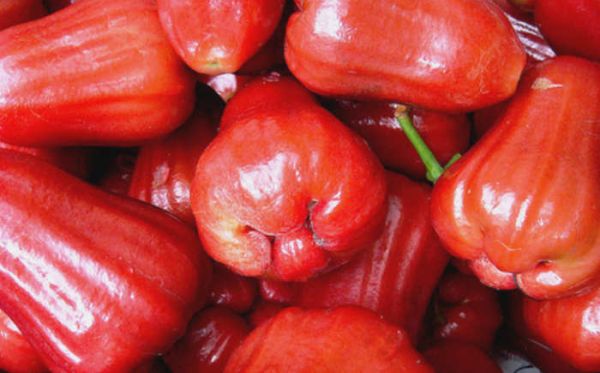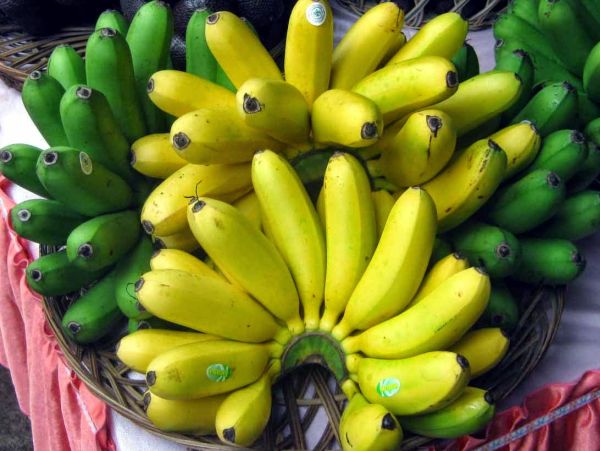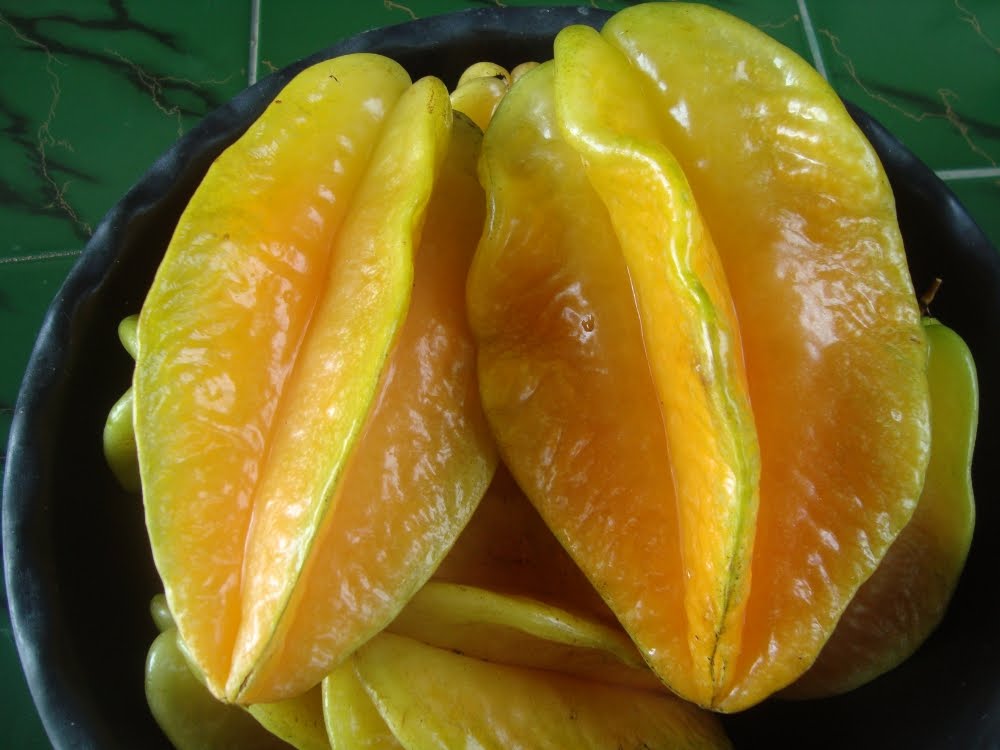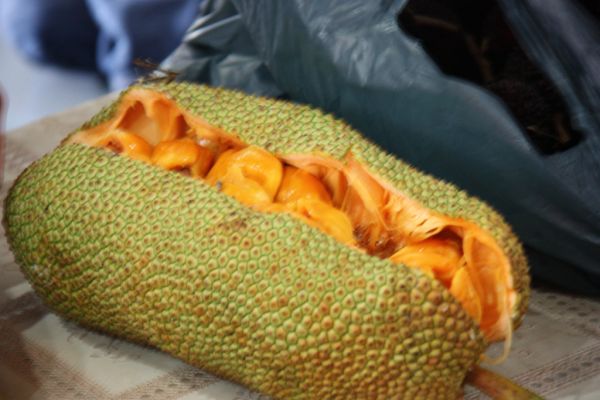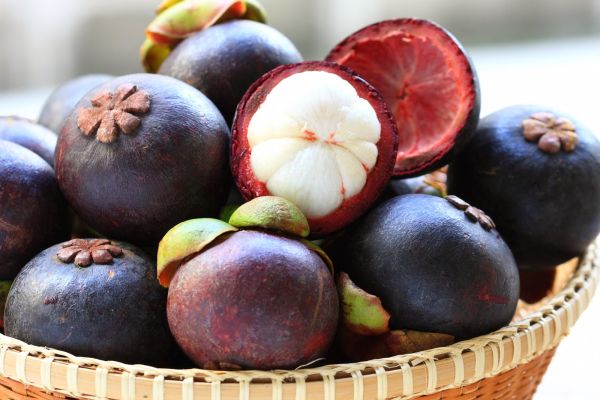Fruit is known to have many benefits for the body. Besides being rich in fiber, vitamins, and minerals, dye pieces (phytochemicals) are important as an antioxidant that can counteract all kinds of degenerative diseases such as cancer, heart disease, and stroke.
In Indonesia there are many kinds of fruit that are not available in the United States. Fruits like Rambutan, Durian, and many more, are uncommon to many people around the world, but they each have something to offer in terms of taste and nutrients. Check out this list of 10 exotic fruits from Indonesia.
1. Durian
The durian is the fruit of several tree species belonging to the genus Durio. The name ‘durian’ is derived from the Malay-Indonesian languages word for duri or “spike”, a reference to the numerous spike protuberances of the fruit, together with the noun-building suffix -an. There are 30 recognized Durio species, at least nine of which produce edible fruit. Durio zibethinus is the only species available on the international market: other species are sold only in their local regions.
Regarded by many people in southeast Asia as the “king of fruits”, the durian is distinctive for its large size, strong odour, and formidable thorn-covered husk. The fruit can grow as large as 30 centimetres (12 in) long and 15 centimetres (6 in) in diameter, and it typically weighs one to three kilograms (2 to 7 lb). Its shape ranges from oblong to round, the colour of its husk green to brown, and its flesh pale yellow to red, depending on the species.
Regarded by many people in southeast Asia as the “king of fruits”, the durian is distinctive for its large size, strong odor, and formidable thorn-covered husk. The fruit can grow as large as 30 centimeters (12 in) long and 15 centimeters (6 in) in diameter, and it typically weighs one to three kilograms (2 to 7 lbs.). Its shape ranges from oblong to round, the color of its husk green to brown, and its flesh pale yellow to red, depending on the species.
Durian is a seasonal fruit from June to August. The flesh of the fruit can be eaten at different stages of ripeness. It is used to flavor a variety of dishes in Southeast Asian cuisine.
A 100 gram (3.5 ounce) has 147 calories, 1.47 grams protein, 3.8 grams dietary fiber, and 5.33 grams total fat. Even though it has higher fat than most fruit, it is free from saturated fats and cholesterol. It is high in B-complex vitamins including niacin, riboflavin, vitamin B5, vitamin B-5, and vitamin B-1 which is rare for fruit. There is also a good amount of minerals such as copper, iron, manganese, and magnesium, as well as potassium and tryptophan (called ‘nature’s sleeping pill’).
2. Salak (Snake Fruit)
Salak (Salacca zalacca) is a species of palm tree (family Arecaceae) native to Java and Sumatra. It is cultivated in other regions as a food crop, and reportedly naturalized in Bali, Lombok, Timor, Malaysia, Maluku, and Sulawesi. Salak is exported from Indonesia.
It is a very short-stemmed palm, with leaves up to 6 meters (20 ft) long; each leaf has a 2-metre long petiole with spines up to 15 centimeters (5.9 in) long, and numerous leaflets. The fruits grow in clusters at the base of the palm and are also known as snake fruit due to the reddish-brown scaly skin. They are about the size and shape of a ripe fig, with a distinct tip. The pulp is edible. The fruit can be peeled by pinching the tip, which should cause the skin to slough off so it can be pulled away. The fruit inside consists of three lobes with the two larger ones, or even all three, containing a large inedible seed. The lobes resemble, and have the consistency of, large peeled garlic cloves. The taste is usually sweet and acidic, with a strong astringent edge, but its apple-like texture can vary from very dry and crumbly (salak pondoh from Yogyakarta) to moist and crunchy (salak bali).
3. Kedondong (Golden Apple)
Spondias dulcis (syn. Spondias cytherea), is known commonly as ambarella. It is an equatorial or tropical tree, with edible fruit containing a fibrous pit. It is known by many other names in various regions, including kedondong in Indonesia, buah long among the Chinese population in Singapore, pomme cythere in Trinidad and Tobago, Dominica, Guadeloupe, and Martinique, June plum in Bermuda and Jamaica, juplon in Costa Rica, golden apple in Barbados and Guyana, jobo indio in Venezuela, cajá-manga and cajarana in Brazil and São Tomé and Príncipe, quả cóc in Vietnam, manzana de oro in Dominican Republic. It is known as Golden Apple in the United States.
This is a fast-growing tree which can grow as tall as 66 feet in its native range but grows up to 40 feet in other areas. The tree was introduced into different tropical areas around the world. Some trees are grown in South Florida.
The fruit from the Ambarella tree may be eaten raw. It is crunchy but has a slight sour taste. Some describe it as having a pineapple-mango flavor when it is fully ripe. The fruit is generally made into preserves or as a flavoring for soups, sauces, and stews.
A 3.5 ounce serving of Ambarella fruit has 41 calories, 0.27g of fat, 10g of carbs, 0.88g of protein, and 2.2g of dietary fiber. It also contains 19mg of Calcium, 0.08mg of Iron, 250mg of Potassium, 721IU of Vitamin A, and 76mg of Vitamin C.
4. Duku (Lansium parasiticum)
Lansium parasiticum (syn. Lansium domesticum), also known as langsat (/ˈlɑːŋsɑːt/) or lanzones, is a species of tree in the Mahogany family. The plant, which originates from western Southeast Asia, bears edible fruit. It is the provincial flower for the Indonesian province of South Sumatra.
The tree is average sized, reaching 30 meters (98 ft) in height and 75 centimeters (30 in) in diameter. The trunk grows in an irregular manner, with its buttress roots showing above ground. The tree’s bark is a greyish color, with light and dark spots. Its resin is thick, and milk colored.
The Langsat is cultivated mainly for its fruit which can be eaten raw. It can also be made into syrup. The wood is often used in construction, and some part of the plant are used as traditional medicine. The seeds can be made into a deworming and ulcer medication. The bark is used to treat malaria and dysentery. If the bark is powdered, it is used to treat scorpion stings. The fruit is used to treat diarrhea as well as a mosquito repellant.
A 3.5 ounce serving of Langsat has 0.8g protein, 9.5g carbohydrates, 2.3g fiber, 20 mg calcium, 30 mg phosphorus, 13IU vitamin A, 89mcg thiamine, 124mg riboflavin, and 1mg ascorbic acid.
5. Rose Apple / Water Apple
Rose apple is a name applied to any group of fruits of this genus but may only be known by the Indian/Malay name of “jambu”. Jambu has a Sanskrit origin and is applied in Malaysia and Indonesia to several quite different fruits. In Malaysia, it generally means cultivated fruits as opposed to those in the wild; but it is most often used to refer to fruits from this genus. The same holds true in Indonesia, except that the word can refer to plants of other genera. For example, “jambu batu” (stone jambu) refers to the guava, while “jambu met” means the cashew fruit. Rose apples are indigenous to Southeast Asia or the Indian subcontinent. They do bear a superficial resemblance to apples but are quite different to eat.
A 3.5 ounce serving of raw Jambu (rose-apples) has 0.3g fat, 5.7g carbohydrates, 0.6g protein, 0 fiber, 29mg calcium, 123mg potassium, 340mg vitamin A, and 22mg vitamin C.
6. Banana
A banana is an edible fruit, botanically a berry, produced by several kinds of large herbaceous flowering plants in the genus Musa. (In some countries, bananas are used for cooking and may be called plantains.) The fruit is variable in size, color, and firmness, but is usually elongated and curved, with soft flesh rich in starch covered with a rind which may be green, yellow, red, purple, or brown when ripe. The fruits grow in clusters hanging from the top of the plant. Almost all modern edible parthenocarpic (seedless) bananas come from two wild species – Musa acuminata and Musa balbisiana. The scientific names of most cultivated bananas are Musa acuminata, Musa balbisiana, and Musa × paradisiaca for the hybrid Musa acuminata × M. balbisiana, depending on their genomic constitution. The old scientific name Musa sapientum is no longer used.
A 3.5-ounce banana serving has 89 calories, 22.84g carbohydrates, 1.09g protein, 0 mg cholesterol, and 2.6g dietary fiber. The serving also contains folates, niacin, riboflavin, thiamin, vitamins A, C, E, and K. Minerals in bananas include calcium, copper, iron, magnesium, manganese, phosphorus, selenium, and zinc.
7. Rambutan
The rambutan is a medium-sized tropical tree in the family Sapindaceae. The name also refers to the fruit produced by this tree. The rambutan is native to Philippines, Malaysia, and other regions of tropical Southeast Asia. It is closely related to several other edible tropical fruits including the lychee, longan, and mamoncillo.
The name ‘rambutan’ is derived from the Malay language word for rambut or “hair”, a reference to the numerous hairy protuberances of the fruit, together with the noun-building suffix -an. In Vietnam, it is called chôm (meaning “messy hair”) due to the spines covering the fruit’s skin.
Rambutan is native to tropical Southeast Asia and commonly grown throughout Indonesia, Malaysia, Thailand, and the Philippines. It has spread from there to various parts of Asia, Africa, Oceania, and Central America.
Although its precise natural distribution is unknown, it is thought to have originated on the Malay peninsula. The earliest historical record of rambutan trees show that they were cultivated by the Malayan jungle tribes around their temporary settlements, a practice followed to date. The widest variety of cultivars, wild and cultivated, are still found in Malaysia and Indonesia.
A 3.5-ounce serving of fresh rambutan has 75 calories, 16.02g carbohydrates, 0.46g protein, 0 mg cholesterol, and 0.24g fiber. It has 30 mg vitamin C that is about 50% of the recommended daily allowance, 10.6 mg calcium, and 31 mg phosphorus.
8. Star Fruit
Carambola, also known as starfruit, is the fruit of Averrhoa carambola, a species of tree native to the Philippines, Indonesia, Malaysia, India, Bangladesh, and Sri Lanka.
Star fruit is a five-ribbed fruit and when cut crosswise to form stars. When young, his skin pale green and turn yellow to reddish when ripe. The flesh is thick, yellow, and lots of water. It was sweet to sour.
A 3.5-ounce serving has 31 calories, 6.73g carbohydrates, 1.04g protein, 0.33 total fat, 0 mg cholesterol, and 2.88g fiber. Star fruit also contains niacin, thiamin, riboflavin, vitamins A, C, E, and K as well as calcium, iron, magnesium, phosphorus, zinc, sodium, and potassium.
9. Chempedak Fruit
Artocarpus integer, commonly known as cempedak (pronounced “chem-pe-dak”), is a species of tree in the family Moraceae, and in the same genus as breadfruit and jackfruit. It is native to southeast Asia, from Indonesia and the Malay Peninsula to the island of New Guinea. It is also grown and eaten in Andhra Pradesh, Tamil Nadu, and Kerala states of India. Furthermore, the tree has also been introduced to Queensland.
The fruit starts out a yellowish-green when it is forming and turns brownish-yellow when it is ripe. The fruit is an elongated round shape and is believed to be beneficial for heart health, healthy eyes, in preventing strokes, and lowering cholesterol in the blood, and expelling parasites.
Cempedak has 117 calories for 3.5 ounce serving. It contains 0.3 grams of fat, 25.8 grams carbohydrates, 3.4 grams fiber, 40 mg calcium, 5 mg phosphorus, 246 mg calcium, and 17.7 mg vitamin C. Cempedak is believed to help maintain a healthy digestive tract, decrease cholesterol, and prevent tumors.
10. Mangosteean
The purple mangosteen (Garcinia mangostana), colloquially known simply as mangosteen, is a tropical evergreen tree believed to have originated in the Sunda Islands and the Moluccas of Indonesia. It grows mainly in Southeast Asia, and in tropical South American countries such as Colombia, in the state of Kerala in India and in Puerto Rico, where the tree has been introduced. The tree grows from 6 to 25 m (19.7 to 82.0 ft) tall.
The fruit of the mangosteen is sweet and tangy, juicy, somewhat fibrous, with fluid-filled vesicles (like the flesh of citrus fruits), with an inedible, deep reddish-purple colored rind (exocarp) when ripe. In each fruit, the fragrant edible flesh that surrounds each seed is botanically endocarp, i.e., the inner layer of the ovary. Seeds are almond-shaped and sized.
One cup of drained mangosteen fruit offers 143 calories, 35 grams carbohydrates, 3.5 grams fiber, 1-gram fat, 1-gram protein, vitamin C, folate, thiamine, riboflavin, manganese, copper, and magnesium. Mangosteen is believed to reduce inflammation, may have anticancer effects, may promote weight loss, and supports blood sugar control but further research is needed.

